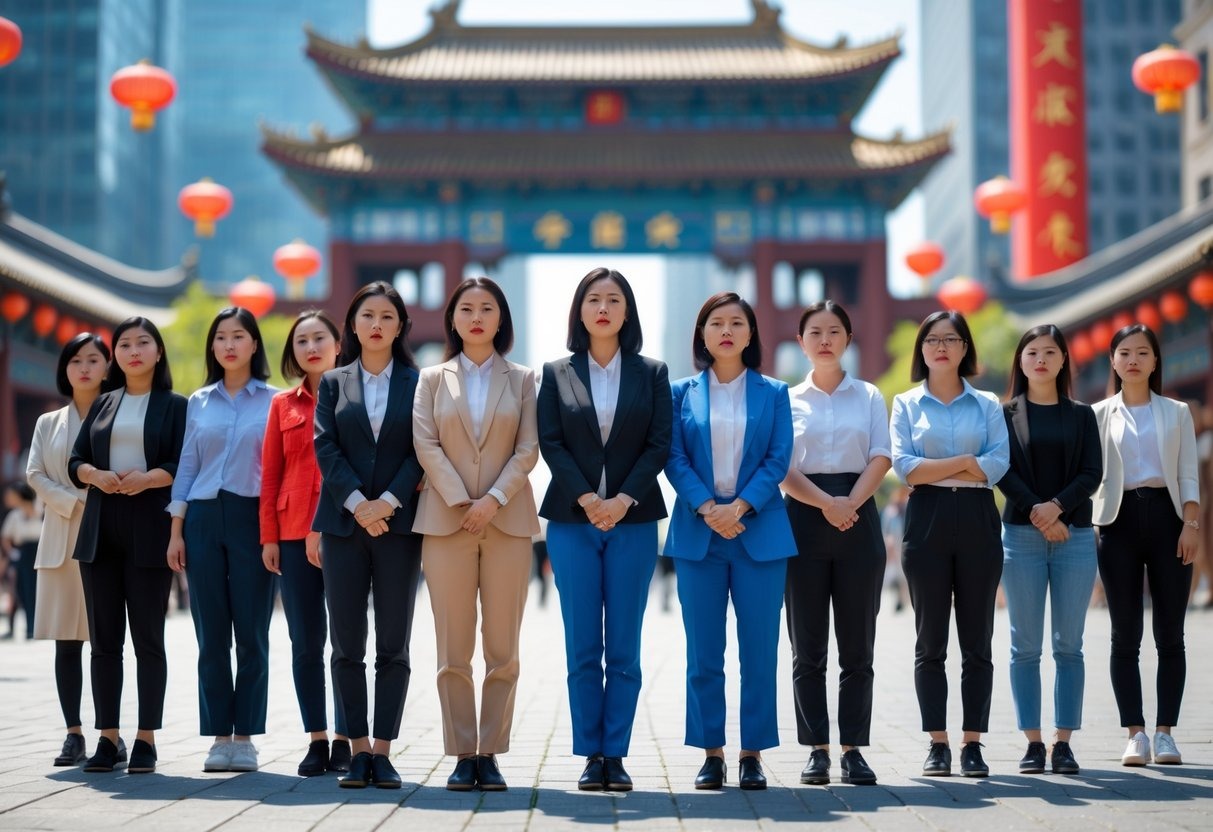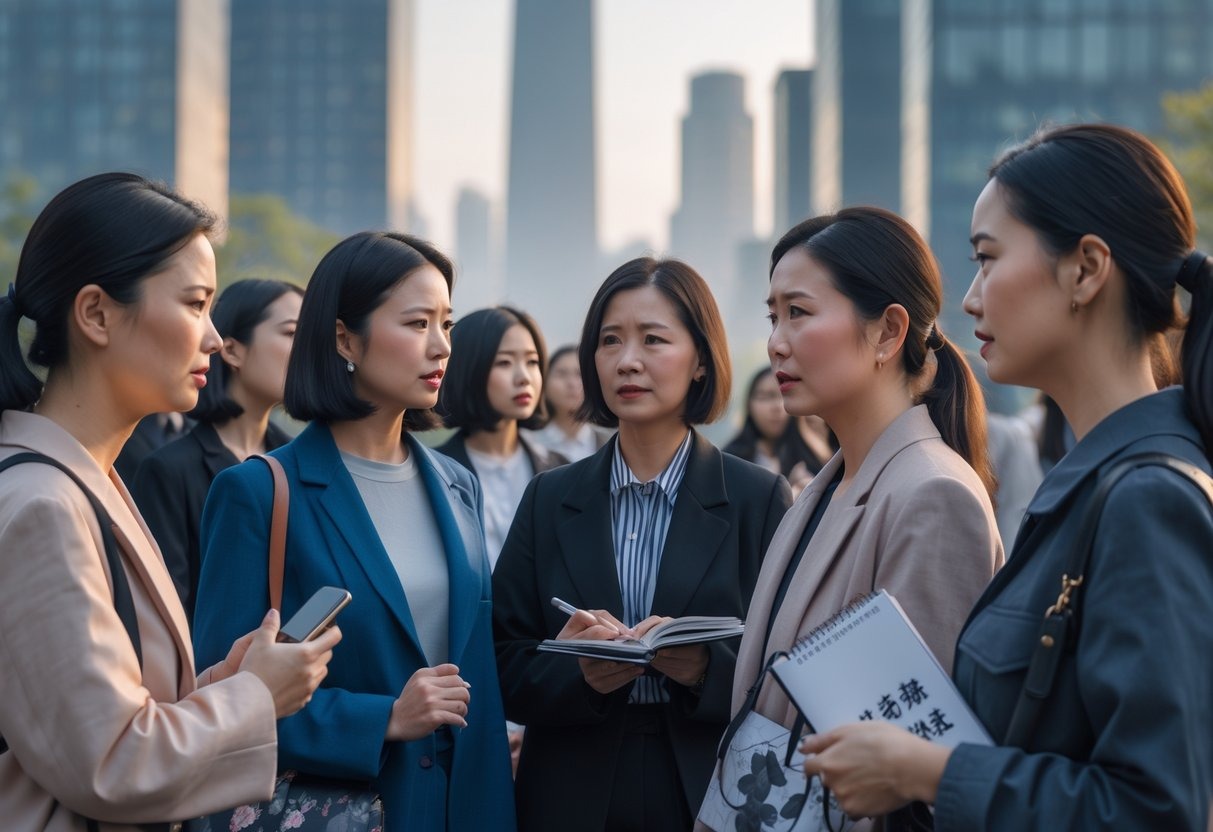Change is everywhere in China, but progress for women? It's been a bit uneven. The Constitution promises equality, and there are over a hundred laws meant to protect women’s rights.
Still, in daily life, gaps show up in pay, leadership, and social expectations. Women in China have gained legal recognition but still face barriers that limit full equality.
Tradition and modern politics both play a role here. More women hold seats in government now, but gender equality rarely gets much spotlight at major political meetings.
Activists push for reform, but official stories sometimes paint feminism as a foreign idea instead of a shared goal. That’s frustrating for those who just want fairness.
Understanding women’s rights in China means looking at how law, culture, and policy shape real lives. Progress isn’t just about laws—it’s about how society truly values equality.
Key Takeaways
- Women’s rights in China have improved legally but remain uneven in practice.
- Cultural and political factors continue to influence gender equality.
- Ongoing change depends on both policy enforcement and social attitudes.
Current Status of Women's Rights in China

Women in China have seen gains in education, health, and legal rights. But gaps in pay, leadership, and policymaking are still obvious.
Laws spell out equality, but social norms and weak enforcement often get in the way.
Legal Protections and Government Policies
China’s Law on the Protection of Women’s Rights and Interests, updated in 2023, lays out women’s equal rights in politics, the economy, culture, and family life. It tells government agencies to fight discrimination and harassment.
The law also brings tougher penalties for gender-based violence and workplace bias. But how much does that change things on the ground?
The Communist Party of China (CPC) leads women’s rights work under its system. So, policy priorities usually line up with national development goals, not independent advocacy.
Under Xi Jinping, leaders talk about gender equality as part of “social harmony,” but public activism hits limits. State-run groups like the All-China Women’s Federation put policies into action, but always within Party rules.
Workplace Equality and Economic Participation
Women make up nearly half of China’s labor force. You’ll see strong participation in education and mid-level jobs, but there’s still a clear gender gap in senior positions and pay.
Women earn less on average and often face hiring bias, especially when it comes to age or family status.
Government campaigns push women to work in science, tech, and rural jobs. But private sector hiring practices still favor men for top roles.
Maternity leave and childcare support exist, but many employers see them as a burden, not a right.
Key challenges include:
- Unequal pay for equal work
- Limited promotion opportunities
- Informal pressure to leave jobs after childbirth
Even with these issues, women’s entrepreneurship is on the rise. Small businesses and online commerce give new ways to earn and lead.
Political Representation and Leadership
More women are in politics than before, but representation is still modest. As of 2024, women hold about 26.5% of seats in the National People’s Congress (NPC).
That’s better than before, but still below the global average. High-level leadership jobs, like provincial governors or ministers, are mostly held by men.
Under Xi Jinping, political messages stress family values and traditional roles, which makes it tough to push for deeper gender reforms. Women’s participation in local government and community groups has gone up through Party-led programs.
Independent women’s movements, though, have little room to grow. Training and Party schools try to promote women in leadership, but cultural expectations and systemic barriers still block many paths.
Looking to build stronger professional relationships in China? Discover key customs and success tips by checking out our article, China Business Etiquette: 10 Rules for Success.
Challenges Facing Women in China

Women in China face a tough mix of barriers—safety, freedom of expression, and social status all come into play. Persistent gender-based violence, limits on activism, and cultural pressures shape everyday life.
Violence Against Women and Social Attitudes
Domestic violence is still a big problem. Surveys say about one in three women in China experience some kind of abuse.
Many cases don’t get reported because victims worry about stigma or don’t trust law enforcement. China passed an Anti-Domestic Violence Law in 2016, but enforcement remains weak.
Police often treat domestic abuse as a private issue. Legal support and shelters are hard to find, especially outside big cities.
Traditional beliefs sometimes excuse male control or aggression. Awareness campaigns try to help, but changing deep-rooted views is slow work.
Community pressure can also make women stay silent. It’s hard to speak out when everyone expects you to keep quiet.
Censorship and Activism
Feminist activism in China runs into strict controls. Online campaigns about gender violence or workplace bias often get censored.
Posts with hashtags like #MeToo vanish from big social media platforms. Authorities keep a close watch on feminist groups, and some activists have faced detention or online harassment.
Since Xi Jinping took power, the government has pushed “family harmony” and “traditional values.” That often clashes with calls for equality.
Still, small networks of women support each other. They use coded language online or meet quietly to talk about rights and safety. It’s risky, but the quiet resistance goes on.
Cultural Expectations and Family Roles
Strong cultural expectations about marriage, motherhood, and caregiving shape women’s lives. Families often expect women to marry by their late twenties, and those who don’t may get labeled “leftover women.”
Workplace inequality reflects these ideas. Employers sometimes avoid hiring women who might take maternity leave. The pay gap stays wide, and childcare options are often lacking.
Government campaigns urge women to focus on family, linking it to national stability. These messages reinforce traditional roles, making it tough to balance career and personal goals.
Want to understand how work and family life are supported in China? Learn about benefits and application steps by reading our guide, China Maternity Leave: Policies, Benefits & How to Apply.
Historical and Global Perspectives on Women's Rights

China’s journey on women’s rights runs through reform, activism, and global connections. Local fights for equality have mixed with global feminist ideas and policy trends.
The Evolution of Women's Rights Movements
Chinese women’s rights go back to the late Qing and early Republican eras. Reformers called for women’s education and political participation, tying gender equality to national strength.
In 1912, the Women’s Suffrage Alliance formed to push for voting rights, though it didn’t succeed. Early activism often came from male reformers who saw women’s emancipation as part of a stronger nation.
Later, women themselves led more organizing and advocacy. By the mid-20th century, the Communist government promoted legal equality, including rights to work and education.
Still, social expectations and political control limited independent feminist movements.
Here’s a quick timeline of key moments:
Influence of the Beijing Declaration and Platform for Action
In 1995, Beijing hosted the Fourth World Conference on Women. That meeting produced the Beijing Declaration and Platform for Action (BPfA), a global plan for gender equality.
China’s involvement brought new attention to women’s rights at home. The government backed research on gender issues and grew programs in education, health, and employment.
The All-China Women’s Federation gained new international links, which shaped policy back home. Globally, 189 UN member states adopted the BPfA, agreeing gender equality is key for sustainable development.
Reviews show progress, but big gaps in representation, pay, and legal protection remain. The BPfA still guides China’s and global gender policies.
International Figures and Feminist Thought
To really get China’s women’s rights movement, you have to look at global feminist thought. Thinkers like Simone de Beauvoir shaped discussions by exploring how society defines women’s roles.
Her ideas pushed scholars and activists to question inequality in public and private life. In China, feminist academics adapted these theories to local realities.
They studied how culture, work, and family shape gender relations. This research built up women’s and gender studies, which took off after the 1990s.
International cooperation grew through NGOs and UN programs, linking Chinese activists with global networks. These partnerships encouraged sharing strategies for gender equality and human rights.
Curious about how women are shaping today’s workforce in China? Explore the latest insights by reading our guide, Women Employment in China: Trends, Challenges, and Opportunities.
Final Thoughts
Understanding women’s rights in China offers valuable insight into the nation’s social progress and legal reforms. From gender equality in education and employment to protection against discrimination and violence, China continues to strengthen laws supporting women’s empowerment.
Yet, challenges remain, and navigating these evolving frameworks can be complex. Whether you represent an organization, business, or advocacy group, expert legal guidance ensures compliance and effective action.
To gain deeper insights or professional assistance on gender equality laws and related regulations, consult China Legal Experts today for clear, reliable legal support tailored to your needs.
Frequently Asked Questions
What are the current legal protections for women's rights in China?
You’re covered by the Law on the Protection of Women’s Rights and Interests, which was recently updated to fight discrimination and harassment. The Constitution and Labor Law also promise gender equality and equal pay for equal work.
These laws cover education, jobs, marriage, and property rights.
How does the Chinese government enforce laws related to gender equality?
Local governments, courts, and groups like the All-China Women’s Federation handle enforcement and support women’s claims. But enforcement can be spotty, especially in smaller cities or rural areas where awareness and resources are limited.
What challenges do women in China face in the workplace?
Women often deal with hiring discrimination, lower pay, and pressure to leave work after having children. Some employers still prefer men for management roles.
Balancing family and career is a big challenge for many women in China.
What measures are being taken to address gender-based violence in China?
The Anti-Domestic Violence Law of 2016 protects you and lets courts issue restraining orders against abusers. Police and courts now have clearer steps for handling these cases.
Even with these changes, many victims don't report abuse because they're afraid or ashamed. Honestly, it's still tough for people to get help.
How is women's representation in Chinese politics evolving?
You'll notice more women in local government jobs these days. But in the highest national offices, women are still rare.
The government encourages women to join politics by using quotas and training programs. Still, men mostly fill the top leadership spots, and real change feels a bit slow.
What is the role of NGOs and women's groups in advancing gender rights in China?
You’ll see NGOs and women’s groups out there, trying to raise awareness and offering legal help. They also support people who’ve faced discrimination or violence.
Many of these groups work with state organizations to push for gender equality. Sure, the government keeps a close eye on their activities, but they still manage to reach communities and speak up for women’s rights.
Subscribe to receive updates
Subscribe to receive the latest blog posts to your inbox every week.



